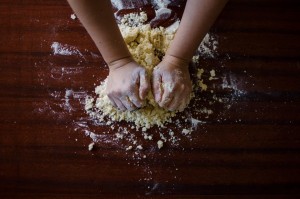Physio Health Advice > De Quervain’s Tenosynovitis
What is it?
De Quervain’s Tenosynovitis is a painful condition that affects two tendons on the thumb-side of the wrist. These tendons are responsible for moving the thumb sideways and backwards and sometimes become trapped as they pass through a small tunnel between the wrist and the thumb.
These tendons respond poorly to the extra compression and become sore to move and tender to touch. In some circumstances, the thickened, inflamed tissues may develop adhesions, or scarring, restricting movement of the thumb. This condition affects many people, typically between the ages of 30 and 50. Women are affected 10 times more than men. Those affected include sportspeople who use rackets, bowlers, rowers, golfers, and canoeists. Manual labourers who perform repetitive duties are also commonly affected.
De Quervain’s tenosynovitis is caused by a combination of overuse and overload factors. Hormones during pregnancy can also contribute as they sometimes cause tendon swelling. New mothers often develop this condition while holding their newborn to breastfeed.
Signs and Symptoms?
The hallmark symptoms of De Quervain’s Tenosynovitis are pain and swelling at the base of the thumb. These may develop suddenly, or over a period of time. The symptoms are made worse by activities requiring forceful gripping, pinching between the thumb and another finger, movement of the thumb, as well as twisting of the wrist.
To diagnose this condition, your physiotherapist will perform a Finkelstein’s test. This involves creating a fist with the hand, then tilting the hand away from the thumb. A positive result is pain on the thumb side of the wrist.
How can Physio help?
Your physiotherapist is trained to effectively assess the condition and begin your rehabilitation. In most cases, you will be managed alongside a doctor as well. Typically, you will be immobilized in a splint for 3-4 weeks, which allows the inflamed tissues to rest and heal.
In severe cases your doctor may request a corticosteroid injection to assist the inflamed tissues to heal. Following splinting your physio can help with other treatments including electrotherapies (ultrasound, TENS or interferential therapy), stretching, and a graduated strengthening program. Other methods of treatment to improve function of the thumb and wrist include increasing grip size on objects (pens, steering wheel), improving mechanics of the hand in sports, and altering hand and arm position when cradling bub for breastfeeding.
If symptoms persist at 3 months, we along with your doctor can help you in deciding if surgery is indicated.
If you have any questions, feel free to make an appointment and speak to one of our physiotherapists!


